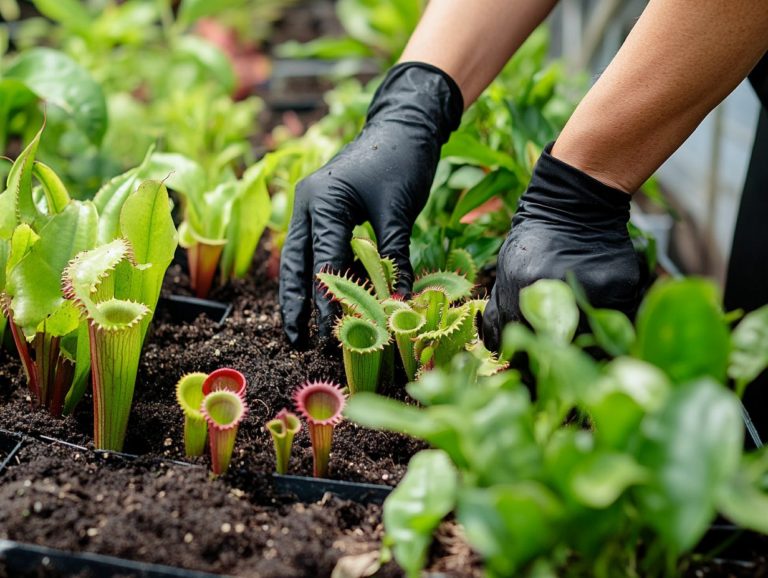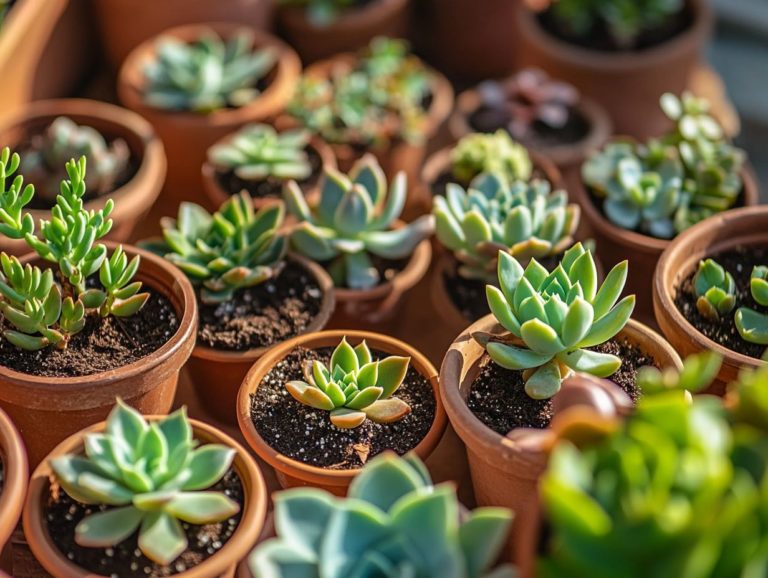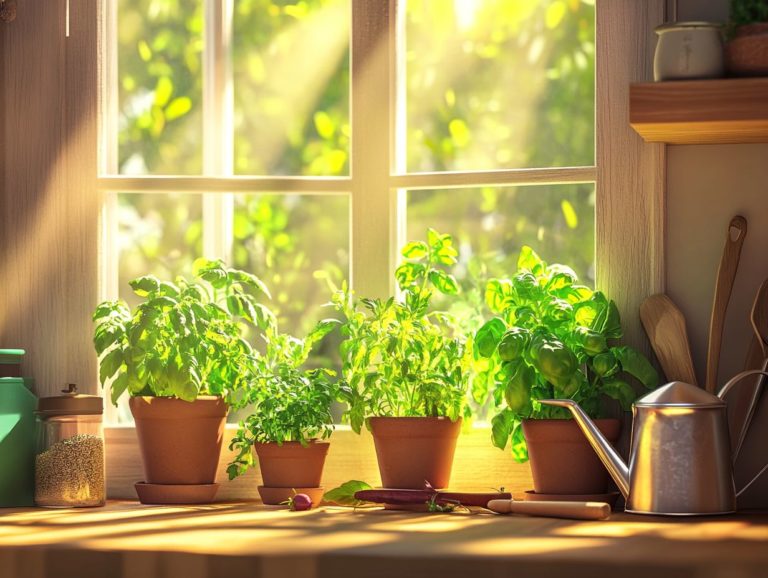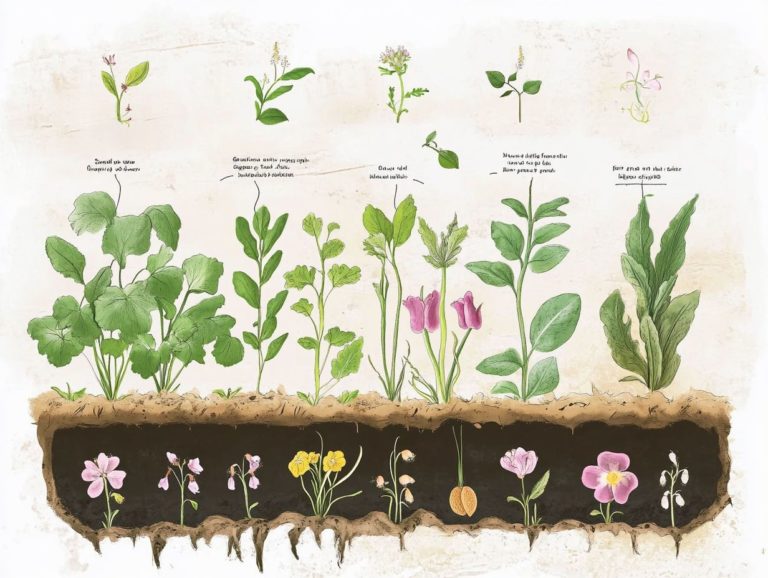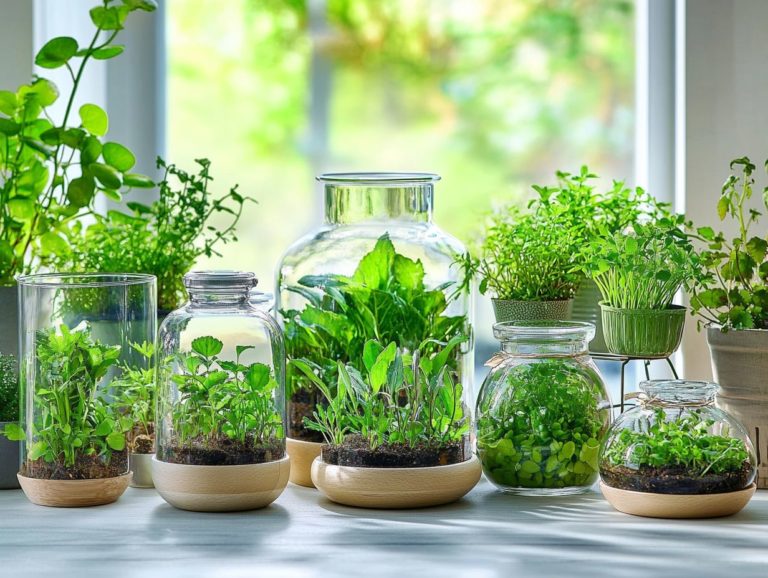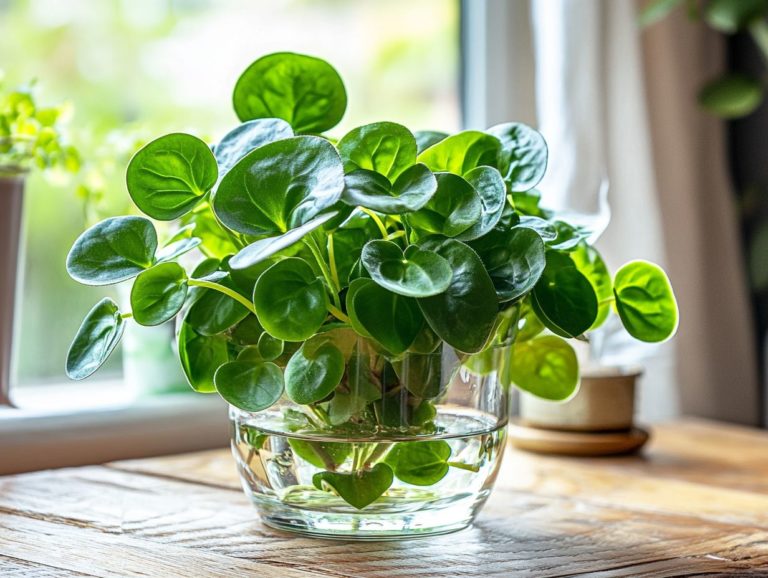How to Propagate Rubber Trees
If you’ve ever found yourself admiring the lush, vibrant leaves of a rubber tree and contemplated inviting more of these stunning plants into your home, get ready to transform your indoor garden!
Propagation offers a truly rewarding opportunity to enhance your indoor garden. It s more straightforward than you might assume. This guide will lead you through the various methods of propagating rubber trees think air layering, stem cutting, and seed germination.
You will also uncover valuable tips for nurturing your newly propagated plants. Prepare to cultivate your green thumb and witness your rubber trees flourish!
Contents
Key Takeaways:
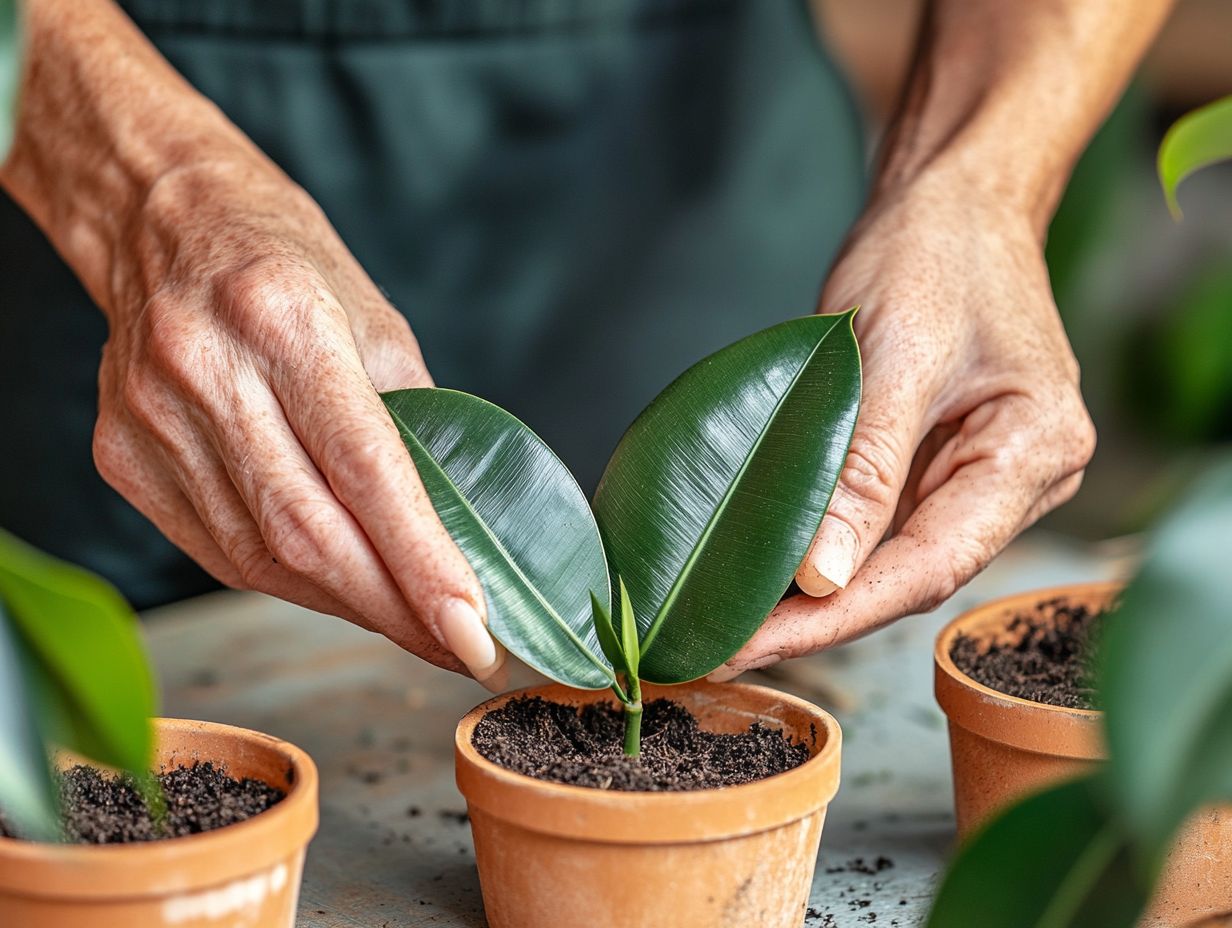
- Propagation is the process of growing new rubber trees from existing ones, allowing for a larger and healthier plant collection.
- The most effective methods of propagation for rubber trees are air layering, stem cutting, and seed germination.
- To successfully propagate rubber trees, ensure you have the necessary supplies and tools, and choose the best time of year for the propagation process.
What is Propagation?
Propagation is the art of creating new plants from existing ones, significantly elevating your indoor houseplant collection, particularly with rubber plants like the Ficus elastica. This method gives you the power to multiply your favorite varieties without the hassle of seeds, using methods like node cuttings, main stem cuttings, and air layering.
Mastering these methods ensures the successful growth of new saplings while helping you manage moisture and humidity levels, which are crucial for healthy shoot development.
By mastering plant propagation, you can expand your green spaces while maintaining the vitality and health of your plants. Elevating humidity levels and keeping moisture in the soil are key for successful growth during the early stages, as seedlings are particularly sensitive to environmental changes.
Using clean tools is essential to ward off infections and diseases that could jeopardize both your parent plants and their new offspring. Taking these considerations into account strengthens your connection with your plants, resulting in a thriving collection that reflects your personal care and expertise.
Methods of Propagation
You have numerous effective methods at your disposal for propagating rubber plants, each tailored to suit your unique preferences and gardening style. This means you can confidently propagate Ficus elastica right in your own home.
Among the most popular techniques is air layering, where new roots form while still connected to the parent plant. Stem and node cuttings offer a straightforward approach; with a sharp knife and the right soil mix for rooting, you can simplify the propagation process and watch your new plants thrive.
Air Layering
Air layering is an exceptionally effective propagation technique, particularly for rubber trees. This method enables you to propagate rubber plants while ensuring that the new shoot remains connected to the parent plant until it develops robust roots.
This approach fosters healthy sapling growth and minimizes moisture loss since the cutting remains in a humid environment, often wrapped in a plastic bag to maintain optimal humidity levels.
To successfully perform air layering, follow these steps:
- Start by selecting a healthy shoot, ideally one that is at least a year old.
- Make a shallow cut around the stem just deep enough to remove the bark without damaging the wood creating a ring.
- Treat the exposed area with organic compost to nourish the developing roots.
- Wrap the cutting in moist sphagnum moss or a similar material, then place it in a plastic bag to lock in humidity.
- Check the moisture levels within the bag regularly, ensuring a consistently humid environment.
The advantages of this technique are significant. It not only enhances root production but also allows you to propagate specific hybrids or varieties without relying on seeds, offering a reliable method for rubber tree care.
Start propagating your rubber trees today and watch your indoor garden thrive!
Stem Cutting
Stem cutting is one of the simplest and most popular methods for propagating rubber plants. You can grow new saplings from either main stem cuttings or node cuttings. Choose healthy shoots with multiple leaf nodes and use rooting powder to help them root. Make sure to place the cuttings in a soil mix that holds moisture but drains well.
Start by using a clean, sharp knife to avoid infections that could harm growth. Look for shoots that are at least six inches long and have several healthy leaves; this increases the chances of rooting. After cutting, place the stem in water or a prepared potting mix of equal parts peat moss and perlite for the best drainage.
Keep the cuttings warm and humid. Position them in a spot with indirect sunlight. Regularly check the soil to ensure it stays moist but not soggy. Monitoring moisture retention is vital for successful root development.
Seed Germination
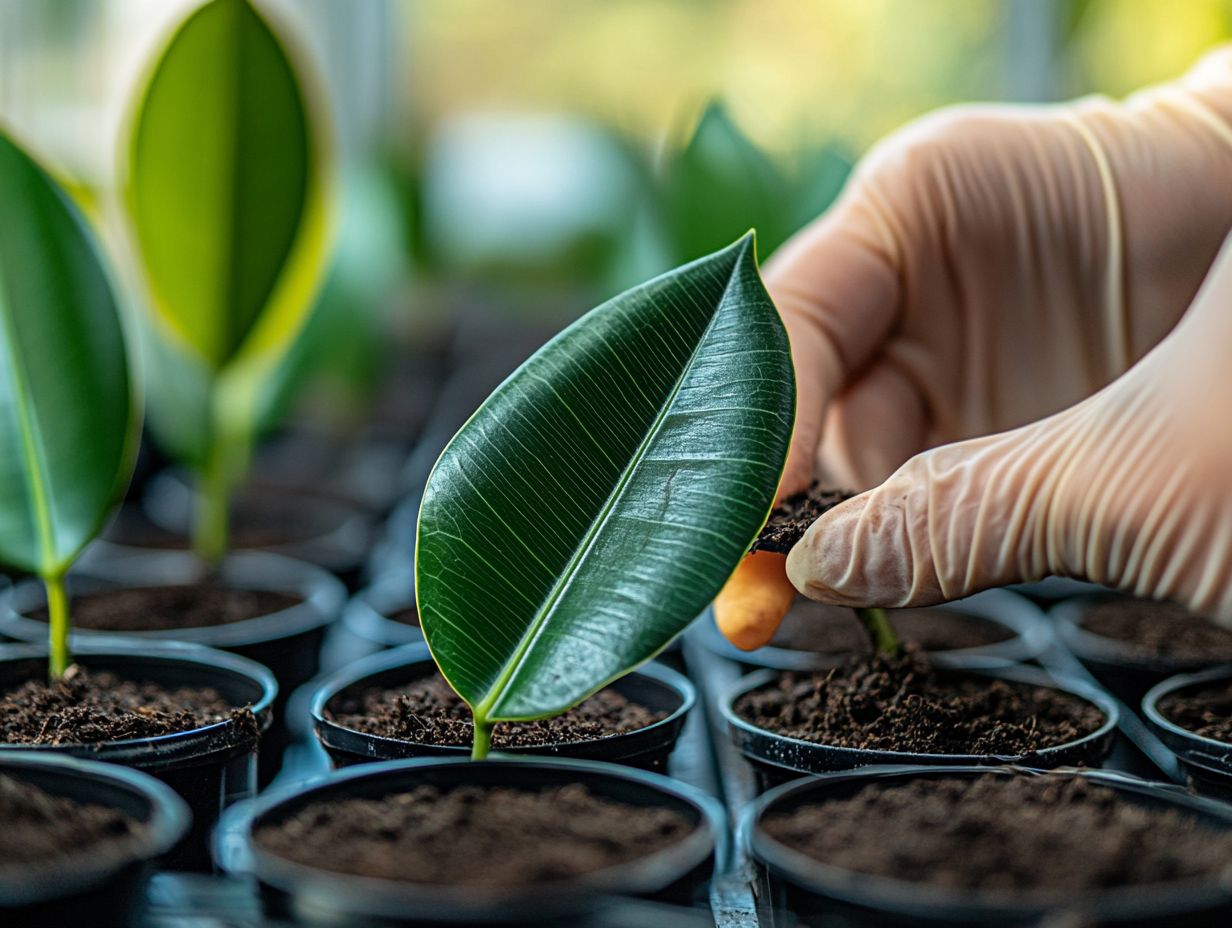
Seed germination is a fascinating but less common method for propagating rubber plants, especially in tropical regions. While it requires patience, starting from seeds can create unique plants with various traits. Sow the seeds in nutrient-rich soil that holds enough moisture and warmth to aid germination.
Prepare the seeds by soaking them in water for a few hours. This softens the hard outer coating and boosts sprouting chances. Use a sterile, well-aerated soil mix that retains moisture while draining excess water. Aim for temperatures between 70 F and 85 F for optimal results.
Keep the soil consistently damp but not soggy. Adding organic compost enhances nutrient availability and creates a healthy environment for vigorous seedling development.
Preparing for Propagation
Before propagating rubber plants, gather the right supplies and tools for success in creating the ideal environment for your new plants.
You ll need a clean, sharp knife for precise cuts, along with high-quality potting soil that drains well. Use a substance that helps roots grow to encourage strong root development. These elements are essential for nurturing vibrant, thriving saplings.
Supplies and Tools Needed
- Clean knife for making cuttings
- Quality potting soil for your saplings
- Rooting substance to encourage roots
- Plastic bag to maintain humidity
- Pruning shears for cleaner cuts
- Small pot with drainage holes to prevent root rot
- Labels for tracking different varieties
- Humidity dome to optimize conditions in dry areas
Labels help keep track of different varieties or stages of your propagating plants. While not essential, a humidity dome can significantly improve rooting conditions in drier environments.
Get ready to grow your new rubber plants! Start your gardening adventure today with these methods!
Best Time for Propagation
The prime time for propagating rubber plants is during the spring season, when temperatures rise and humidity levels become ideal for new growth. This is your opportunity to harness the increased moisture in the air, creating perfect conditions for methods like air layering and node cuttings.
As the days grow longer and warmer, your rubber plant will experience a natural burst of energy, fueling rapid root development and overall growth. With temperatures ideally between 65 F and 75 F and humidity at 50% or higher, your chances of successful propagation soar.
By syncing your gardening efforts with nature s rhythm, you can expect to see growth of saplings within just a few weeks, as the invigorating energy of spring accelerates the healing process of your cuttings. Embrace this vibrant season, and watch as your simple cuttings transform into thriving new life, tapping into the full potential of your rubber plants.
Step-by-Step Guide to Rubber Plant Propagation
This comprehensive guide offers you clear steps for propagating rubber trees, catering to both novice and seasoned gardeners alike. You’ll find helpful propagation tips throughout.
By adhering to these clear steps, you can explore various cutting methods while prioritizing moisture retention an essential factor for fostering new root development and nurturing healthy saplings.
Instructions for Each Method
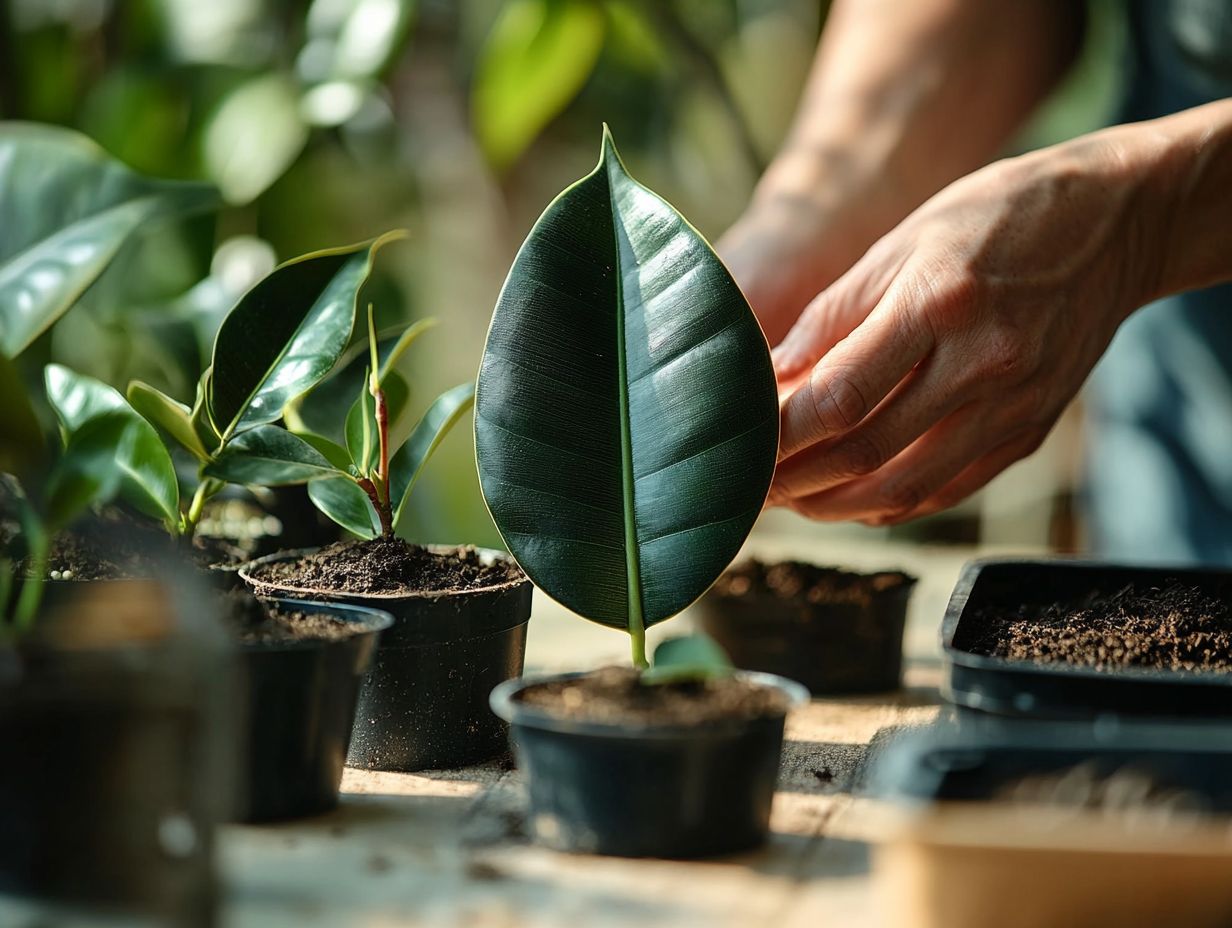
In this section, you will explore the specific instructions for propagating rubber plants, focusing on methods like node cuttings and air layering. It’s essential to minimize moisture loss and promote optimal root development.
Grasp the nuances of each technique and ensure proper drainage holes when using potting soil to significantly enhance your success rates.
Use sharp, sterilized tools for cutting. Clean cuts are crucial for preventing disease and encouraging healthy growth. When selecting nodes for your cuttings, choose ones that boast healthy leaves and prominent growth points.
If you decide to try air layering, maintain a humid environment by wrapping the area with moss and securing it well to maximize moisture retention.
Providing indirect sunlight will create ideal conditions for the development of new roots, underscoring the importance of technique paired with environmental stability in your rubber plant propagation journey.
Caring for Newly Propagated Rubber Trees
Caring for your newly propagated rubber trees is vital for their development into thriving plants. This process requires meticulous attention to transplanting and consistent maintenance practices as they grow.
Keep a close watch for pests and diseases while ensuring that the saplings receive ample sunlight and proper humidity levels to foster their growth post-propagation.
Transplanting and Maintenance Tips
Transplanting newly propagated rubber plants requires a delicate touch, as the right potting soil and careful moisture management are crucial for fostering healthy growth and ensuring their successful establishment in a new environment. Gradually acclimate them to their surroundings while adhering to the proper watering routine to minimize stress.
Select a well-draining potting mix that retains some moisture yet allows excess water to escape. Remember, soggy soil is a surefire way to invite root rot. Place your plants in filtered sunlight after relocating them, shielding them from harsh direct rays at first.
To aid their adjustment, consider using a humidity dome or lightly covering them with plastic for the first few days to help maintain moisture levels. Regularly check the soil and allow it to dry slightly between waterings, as over-watering can hinder growth. Watch for any yellowing leaves, as this could signal improper watering, ensuring your plants thrive beautifully in their new home.
Frequently Asked Questions
What is the best time of year to propagate rubber trees?
The best time of year to propagate rubber trees is in the spring or early summer when the plant is actively growing. This will give the cutting the best chance of successfully establishing roots.
Get ready to see your plants thrive!
What are the steps to propagate rubber trees?
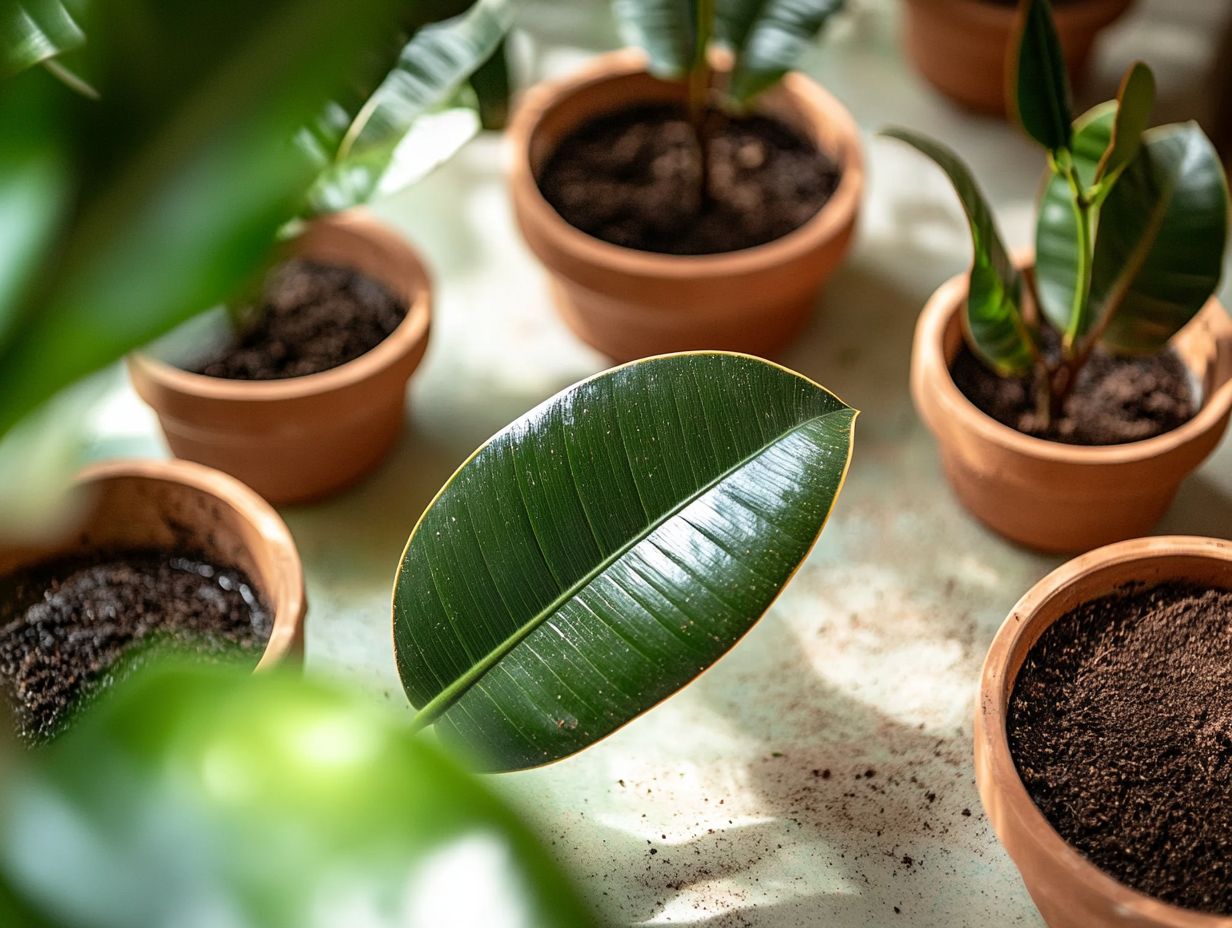
To propagate rubber trees, take a cutting of 6-8 inches from a healthy plant. Remove leaves from the bottom half and dip the end in rooting hormone.
Then, plant it in well-draining potting mix. Keep it warm and humid until roots grow.
Can rubber trees be propagated in water?
Yes, you can quickly propagate rubber trees in water! Just place a cutting in a jar with water, ensuring the bottom is underwater.
Change the water every few days and get ready to see roots grow before moving it to soil.
How long does it take for rubber tree cuttings to root?
Rubber tree cuttings generally root in 2-3 months. However, this may vary based on conditions and plant health.
Keep the cutting in a warm, humid spot to promote root growth.
Do rubber trees need special care during propagation?
Rubber trees don t need special care while propagating. Just keep the cutting warm and humid, and watch the soil moisture.
Indirect light can also help root growth.
Can I propagate rubber trees from leaf cuttings?
You can propagate rubber trees from leaf cuttings, but it s less reliable than using stem cuttings. Cut a healthy leaf at the base and place it in moist soil.
Keep it warm and humid until roots form.

